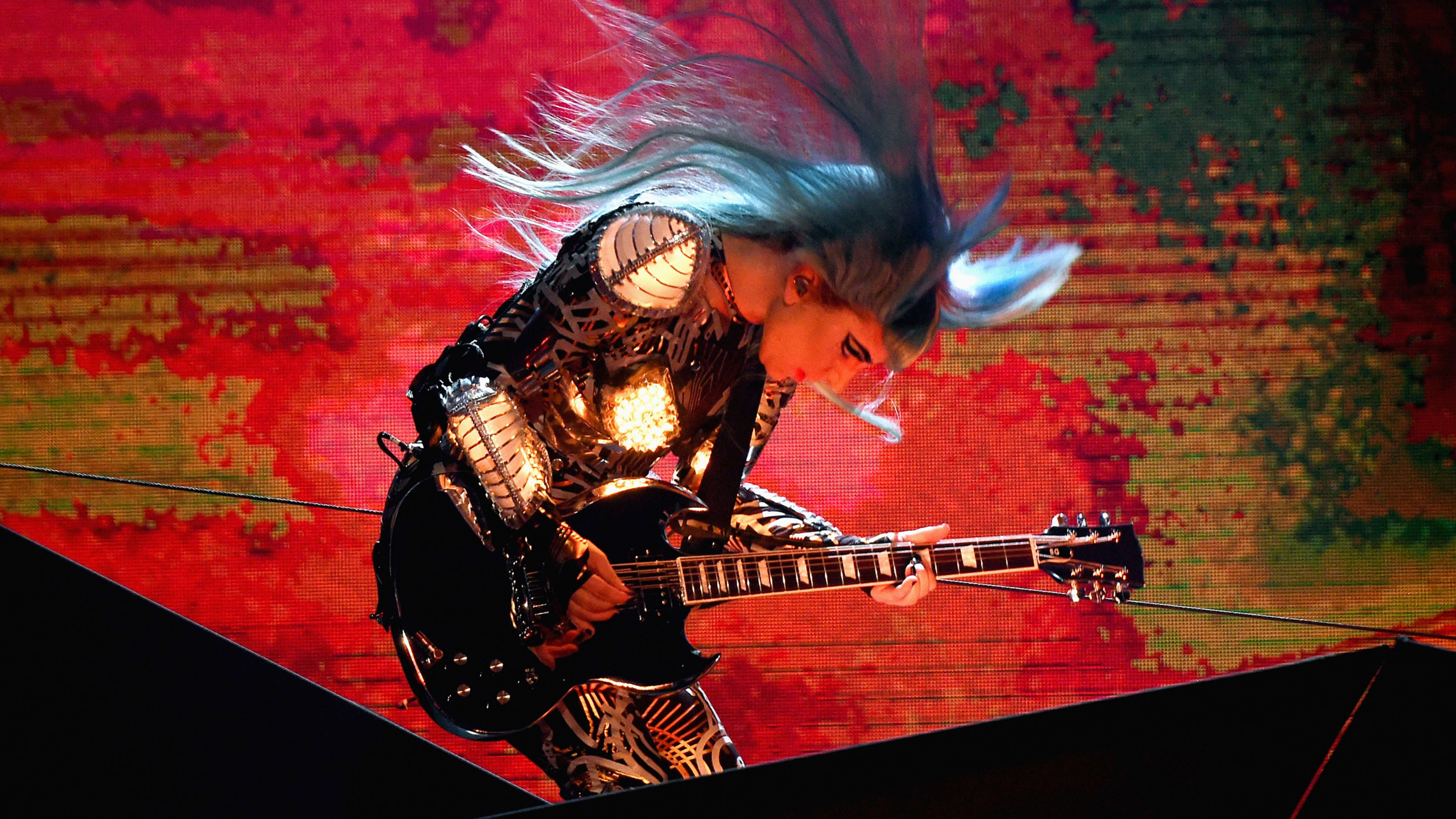At the 2020 VMAs, Doja Cat was going for a very specific aesthetic. She wanted to look like an alien fish goddess. To turn her vision into reality, she brought on Asher Levine, a designer who has made a name creating high-tech, futuristic garments.
At 33, Levine has already created a number of iconic outfits, including the cyborg look that Lady Gaga wore during her 2018 “Enigma” residency, Nicki Minaj’s bionic Barbie look during her 2019 world tour, and the luminescent bodysuit Lil Nas X wears in his recently released “Call Me By Your Name” music video. But while he’s best known for his eye-catching, statement-making pieces for celebrities, Levine is also exploring how to incorporate technology into garments to make them more beautiful and functional. Eventually, he hopes that some of these ideas will trickle down into everyday clothes.
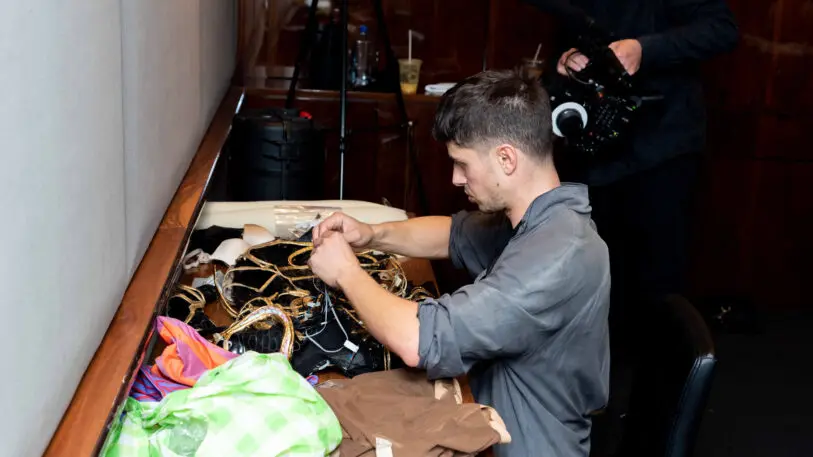
The only boy in sewing class
Levine grew up in Port Charlotte, Florida. His father was a musician and his mother was a dancer, but they each worked day jobs to pay the bills. As a child, Levine enjoyed making things, an interest his mother cultivated by enrolling him in various classes.
At 10, he took a sewing class and discovered he was skilled at sewing both by hand and machine. Levine was particularly interested in using metallic and silky fabrics that were difficult to sew but resulted in unique looks. The teacher invited him to join a local sewing club where the team created outfits that they presented at a competition called “Fashion by Floridians,” which took place at the county, regional, and state level. “It was like a mini Project Runway,” Levine recalls. “Except it would be judged by elderly ladies at the local sewing or quilting chapter, who would judge your fabric selection at construction.”
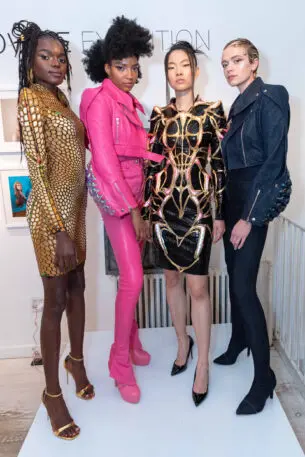
It was good advice. Thanks in part to being president of his local sewing club, Levine got a full ride to Pace University in New York City to study business. Throughout college, he spent days in the Garment District, buying fabrics for extravagant, avant-garde outfits to wear clubbing. He also took a job as a personal stylist at the high-end firm Visual Therapy, which allowed him to spend time at Bergdorf Goodman, picking pieces from Rick Owens, Celine, and other top designers. “This was really an education in good taste, and what good clothing really looks like inside and out,” he says.
A piece for Lil Nas X [Image: courtesy Asher Levine]
When Lady Gaga and Will.i.am call
In 2010, right out of college, Levine launched his first collection: a menswear line that had an androgynous, experimental aesthetic, and specialized in leather and exotic animal skins. His looks were picked up by fashion blogs, which led to a big break early on.
That same year, he received a call from Lady Gaga’s assistant, saying she was going to be photographed by Terry Richardson for a new book and was looking for an unconventional leather jacket. So he got to work creating an oversized version. “This was just when Poker Face had come out, and they didn’t have a big budget,” says Levine. “But I knew this opportunity was too good to pass up. The spread came out, and it got a lot of traction, so I really owe a lot of my early success to Lady Gaga’s willingness to support young talent.”
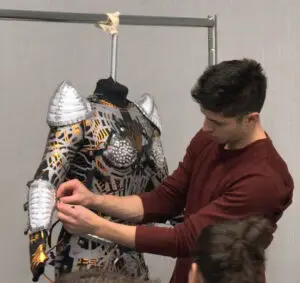
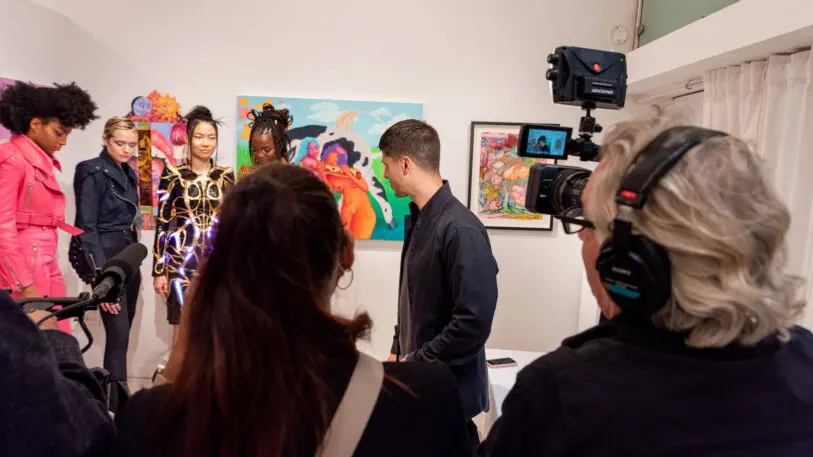
The future of fashion
All of this exposure helped put Levine on the map, allowing him to grow his business. He creates seasonal collections for fashion week, then makes custom couture pieces for clients. Now, he has a team of three full-time employees and twelve part-timers. Most of his pieces aren’t as flashy as the outfits he makes for rock stars, but they still carry his distinct aesthetic, which involves layering fabrics and creating intricate textures. He now has a client base that ranges from Beyoncé to Beth Comstock, former CMO of GE.
Levine says he’s inspired by things he sees in the natural world, like animal skins and patterns in leaves or trees, but he incorporates these into outfits that end up looking otherworldly. Take a white jacket he created for the recent exhibition “Is Fashion Modern?” at the Museum of Modern Art in New York. Inspired by a traditional motorcycle jacket, the piece is designed for a woman’s body, featuring high shoulders and a slim waist. The white fabric is covered in little bumps, reminiscent of the pattern made when butterflies lay eggs. Other parts of the jacket feature the geometric shapes you might find on butterfly wings.
[Image: courtesy Asher Levine]But then, like magic, the jacket lights up, illuminating the complex patterns on the surface. Levine says the lights are designed to look diffuse, like they’re emanating from the person wearing it rather than obvious LED lights. And they also have a function: The arms light up based on whether the driver is turning left or right, and the entire jacket shines red when the driver has stopped. For now, pieces like this are highly conceptual, but it might not be long before they are incorporated into everyday clothes. Levine says he attended a flexible electronics trade show in California, where a team from the government wanted to know more about his MoMA jacket because they were considering incorporating lights into uniforms for fighter jet pilots and air traffic controllers.
Levine is now experimenting with incorporating technology into every part of the design process, from using AI and prototyping outfits virtually, to putting lights in garments and developing entirely new materials. He’s patented a leather mold that allows him to create 3D shapes out of leather. This means he could create a bag simply by forming the leather into a particular design, creating a single, seamless shape. “I’m not interested in technology for technology’s sake,” Levine says. “I’m interested in how technology can help improve the design process and help improve the wearer’s experience of my outfit.”
https://www.instagram.com/p/CEktZExI4tu/
Ultimately, he hopes that the spectacular outfits he creates for musicians help communicate his broader message, which is that fashion can be more than just beautiful and inspiring; it can transform our perception of what clothes can do. “I’m so grateful for the opportunity to create iconic pieces, like the one for Doja Cat, because it’s something that audiences can connect with,” he says. “Children, especially, resonate with these clothes that light up. And I think of this work as almost an educational experience, helping these kids understand my vision for the future of clothing. Because in the end, these children are my future clients; they’re the future bodies I’m going to dress.”
Recognize your brand’s excellence by applying to this year’s Brands That Matter Awards before the final deadline, June 7.
Sign up for Brands That Matter notifications here.
